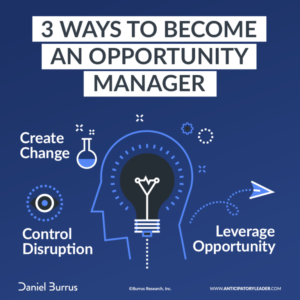Cities worldwide are rebranding through digital transformation, offering marketers insights into modernization and innovative storytelling.

As the CEO of a marketing and PR agency, I’ve observed a fascinating trend in recent years: Major cities around the world are undergoing digital transformations, not unlike the shifts we’ve seen in businesses.
These urban centers are leveraging technology to modernize their infrastructure, preserve their rich histories and rebrand themselves for the future. Marketers should take note because there are insights to be gained from these civic transformations.
The tech hub rebrand
We’ve long associated certain cities with technology: San Francisco’s Silicon Valley, Beijing’s bustling tech scene or Bangalore’s activated start-up ecosystem in India. Now, we’re seeing new players enter the field.
Once known for its music scene, Austin, Texas, has successfully rebranded itself as a tech hub. The city’s “Silicon Hills” moniker is a testament to its marketing savvy and a nod to its “Hill Country” past. The new nickname supports Austin’s new position as a more affordable, lifestyle-friendly alternative to Silicon Valley.
Austin has also claimed the title of the fastest-growing city for top tech talent by percentage. Between 2019 and 2023, Austin’s VC-backed tech startups experienced a 23% growth in their workforces, while big tech firms grew their teams by 44%.
How to achieve an Austin-style rebrand
Rebranding is a strategic process that requires careful planning and execution. Austin succeeded because by building on existing strengths while pivoting towards a new identity. Here are three key ways marketers can implement Austin’s rebranding strategy:
- Identify existing strengths: Like Austin, which leverages its reputation for creativity and quality of life, marketers should recognize and emphasize a brand’s core competencies when rebranding.
- Gradual transition: Austin added tech as a complementary identity without abandoning its music scene, demonstrating the importance of a phased approach.
- Create a compelling narrative: Transforming Austin’s “Hill Country” into “Silicon Hills” tells a story of innovation while paying homage to Austin’s history. Similarly, marketers should craft a narrative that connects their brand’s past with its current and future vision.
For brands transforming, this balanced approach is crucial for keeping customer loyalty while attracting new audiences.
Preserving history through technology
Just as Austin is retaining its creative and musical identity in its rebranding, many cities are grappling with using their history while modernizing. Intelligent document processing (IDP) is key for cities wanting to preserve important paper archives.
Consider Dublin, a city with over a thousand years of history. High-speed scanners digitized crucial historical documents from many different formats. These aren’t the scanners we used in the early aughts to turn our Polaroids into Facebook profile pictures. Companies like IBM can digitize 730 pages per minute, making massive archival and digitization projects possible in a way they have never been before.
In the United States, similar efforts are underway. The National Archives and Records Administration (NARA) aims to digitize 500 million pages of records by September 30, 2026. NARA has partnered with IBM to help government agencies like the EPA and IRS and cultural institutions like the Barack Obama Presidential Library in Chicago establish standards for document digitization.
The marketing lesson here: Don’t discard your brand’s history in the rush to modernize. Instead, carefully incorporate its heritage as a part of your future narrative. Think of this as the Pepsi approach. Pepsi’s logo has evolved over the years, but always maintained its core identity. This deepens emotional connections with audiences while showcasing momentum and innovation.
Infrastructure modernization: A city’s new story
Just as a product marketer plans a campaign around a new feature or function, cities are using infrastructure improvements to modernize their brands. These efforts become powerful marketing tools, reshaping public perception and stimulating growth.
Chicago’s Smart Lighting Program, dubbed the largest streetlight modernization project in the country, is a prime example. By installing wireless LED lights across the city, Chicago is cutting energy costs and improving public safety, telling a story of innovation and sustainability. This project aims to save $ 100 million in electricity costs in its first 10 years.
Atlanta, facing rapid population growth, expects to add nearly 2 million more residents by 2050. As a result, Atlanta is focusing on smart transportation solutions, including the addition of sensors on roads to detect traffic patterns. These efforts, paired with expanded biking and walking plans, are helping rebrand Atlanta as a forward-thinking, livable metropolis.
These cities are doing what every marketer aims to do: Create an engaging narrative of progress and improvement tied to technology.
The solar revolution: A case study in technological adaptation
Digital transformation presents amazing marketing opportunities, but if those transformations fall flat due to technical issues, the resulting press and citizen sentiment can be dire. While not a city initiative, a Mountain West Region solar plant provides an excellent example of how digital advancement requires continued oversight and optimization — a lesson applicable to urban planners, tech companies and marketers alike.
The 100 MWdc solar plant, a green-energy star for the region, recognized a need for further digital transformation during conversations with FTC Solar. Their SUNOPS software helped resolve tracker performance issues, resulting in a 99% improvement. The lesson here: new launches — products, features, leadership changes or digital transformations — must be monitored and adjusted throughout the lifecycle of the campaign. And if the campaign is evergreen, there must be oversight as well.
Balancing act: Modernization, technology and history
Each city, state, region and country must consider how technology can help preserve its history and identity while also modernizing to improve infrastructure and opportunities for future generations.
For marketers, the lessons are clear: embrace your history while innovating for the future, tell a compelling story of transformation and always keep your audience (or citizens) at the heart of your efforts.
The post Urban digital transformation: Insights for marketers from global smart cities appeared first on MarTech.
(9)
Report Post





